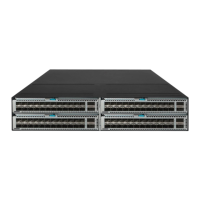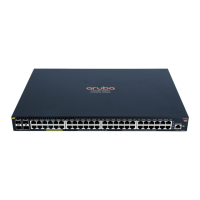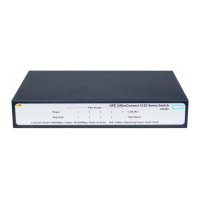199
Configuring process placement
Overview
Process placement enables placing processes to specific CPUs (also called nodes) in your system
for optimal distribution of CPU and memory resources.
Process
A process comprises a set of codes and provides specific functionality. For example, an AAA process
provides AAA functions.
Each process runs in a protected memory space to prevent problems with one process from
impacting the entire system.
1:N process redundancy
The system backs up each active process running on one node to all the other nodes. When an
active process fails, one of its standby processes promptly takes over without impacting any other
service.
Each CPU in the system corresponds to a node. On a device, only one CPU exists. The system
cannot support 1:N process redundancy. All active processes are running on this CPU. In an IRF
fabric, multiple CPUs exist. The system can perform 1:N process redundancy. An active process can
run on each CPU.
1:N process redundancy provides the following benefits:
• Improves service availability.
• Enables the system to quickly regain reliability after device status changes in such conditions
as IRF split and removal of an IRF member.
Process placement policy and optimization
Process placement policies
For an active process running only on the master device, it does not support placement optimization
(by displaying a configuration failure prompt). When such an active process fails, the system
automatically restarts the process. The standby processes are used for active/standby switchover
and ISSU.
Some active processes can run on either the master or subordinate device. When such an active
process fails, the system uses a placement policy to select a new active process among standby
processes.
The system provides a default process placement policy that takes effect for all processes. You can
modify the default placement policy in the view you enter with the placement program default
command. You can also configure a placement policy for a specific process in the view you enter with
the placement program program-name [ instance instance-name ] command. A placement policy
for a process takes precedence over the default process placement policy.
By default, the default process placement policy defines the following rules:
• The active process runs on the main CPU of the master, and the standby processes run on
other CPUs.

